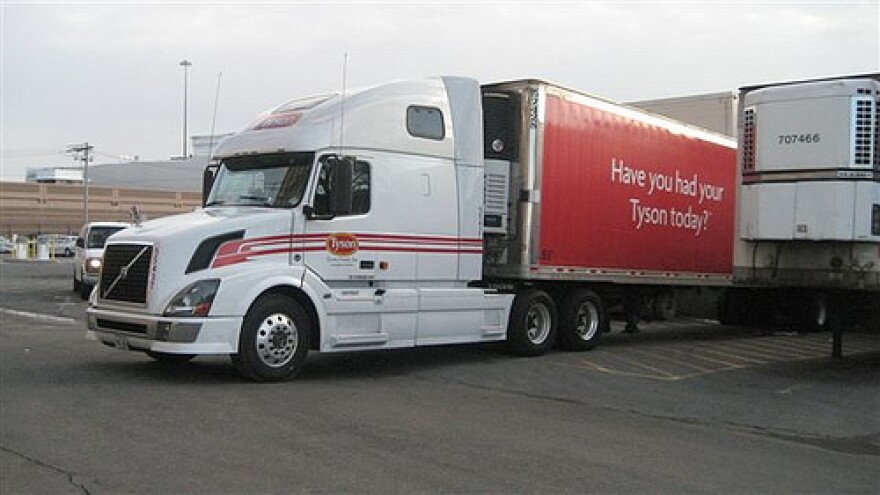From horses, trolleys, trains and steamboats to bikes, cars, buses and planes, the ways St. Louisans get from place to place have undergone a lot of changes over the years. In years to come, even more transportation changes are inevitable.
As the administrator of federal transportation dollars, the East-West Gateway Council of Governments plays a big part in deciding what those changes will look like.
With limited funds and a long list of needs, East-West Gateway has the difficult task of prioritizing transportation projects and creating a vision for the future of transportation in the St. Louis region.
As the organization works to update its long-range transportation plan, it is hosting a four-part discussion series on the topic with an eye to gaging public opinion. The first discussion takes place tomorrow night at the Missouri History Museum.

Finding Funding
Whether bikes, bridges or barges rank as the first priority, new ways to fund them need to be found, said East-West Gateway long-range transportation planner Shay Schindler.
“How we fund transportation now is mostly through the gas tax, the state gas tax, which hasn’t actually been raised in over two decades, not even to off-set inflation,” said Schindler. “We’re also seeing now that people are driving less, and they’re driving more fuel-efficient cars, so really we’re bringing in a lot less revenue than we have in the past to fund our transportation. Also, here in Missouri we’re kind of limited—all those gas tax dollars can only go to roads and bridges.”
One possible source of additional revenue is the proposed transportation sales tax, which will be on the August 5 ballot. Other options include toll roads or a mechanism to charge a fee based on transportation use.
Next month, St. Louis on the Air will devote a program to a discussion of the pros and cons of the proposed .75 percent sales tax increase.
Finding Balance

For Shawn Leight of the St. Louis-based transportation engineering firm CBB, the priority for the future should be in finding balance across transportation modes.
“I think moving forward and trying to create a complete, comprehensive system that all works together is one of our biggest needs,” said Leight, who also works as an adjunct professor at Washington University’s School of Engineering and Applied Science.
He pointed to the East-West Gateway Great Streets Initiative and bus-based rapid transit as positive examples to follow in building communities that have transportation options. The Great Streets Initiative seeks to build neighborhoods that allow for biking, walking, driving and mass transit. Bus-based rapid transit is a proposed Metro project that would extend the frequency and reach of Metro’s service.
But even as St. Louis looks towards diversifying transportation options, the condition of the state’s roads and bridges can’t be ignored, said Leight.
“People want transportation choice,” he said. “Now having said that, 90 percent or more of the travel in the state of Missouri is by automobile.”
According to Schindler, the Missouri Department of Transportation is predicting that it will be required to shut down some bridges in the state beginning in 2017 if funds to repair them aren’t found.

As the president of the St. Louis branch of Giltner, a logistics company, Brad Reinhardt looks at the future of transportation in terms of moving freight. From that perspective, he thinks the biggest concern going forward is attracting manufacturing and truck drivers to St. Louis.
“If we improve infrastructure, I think that will definitely go a long way towards improving manufacturing, which will in turn get the transportation ball rolling,” said Reinhardt, who also is chairman of the Transportation Club of St. Louis.
If Reinhardt were writing the long-range transportation plan for East-West Gateway, additional lanes on Interstate 70 between Kansas City and St. Louis would top his list.
Leight’s list would include additional MetroLink expansions, bridge maintenance, and an update to I-270.
The challenge in writing the long-range plan is finding the right balance, said Schindler.
“There are a lot of competing interests in this region, whether it’s the freight industry or people commuting to work, or transit advocates, bicycle advocates. Everybody has wants and needs,” she said. “So really our challenge is going to be figuring out how to balance all those needs and also taking into consideration the way our population is changing, and what the future population will want out of its transportation system."
Related Event
East-West Gateway Council of Governments Presents a Regional Conversation on the Future of Transportation in St. Louis "Back to the Future: How St. Louis' Transportation Past Informs Its Future"
Wednesday, June 18, 2014
7:00 p.m.
Missouri History Museum, Lindell and DeBaliviere in Forest Park
For more information, call 314-421-4220 or visit the Missouri History Museum website.
St. Louis on the Air provides discussion about issues and concerns facing the St. Louis area. The show is produced by Mary Edwards and Alex Heuer and hosted by veteran journalist Don Marsh.




